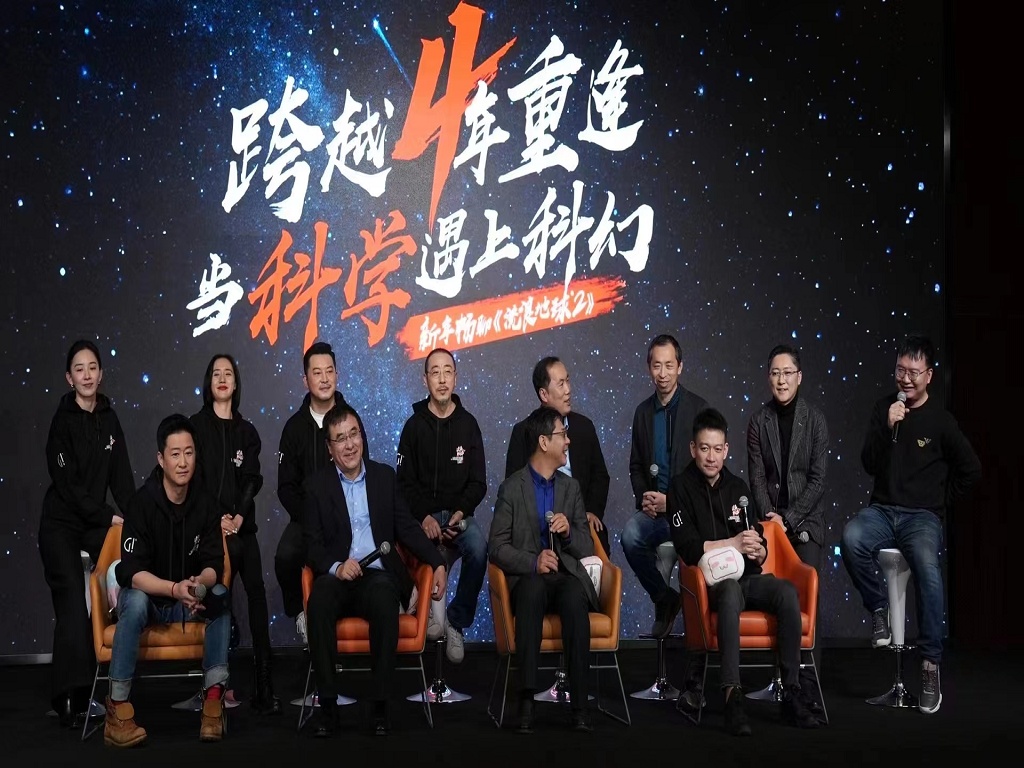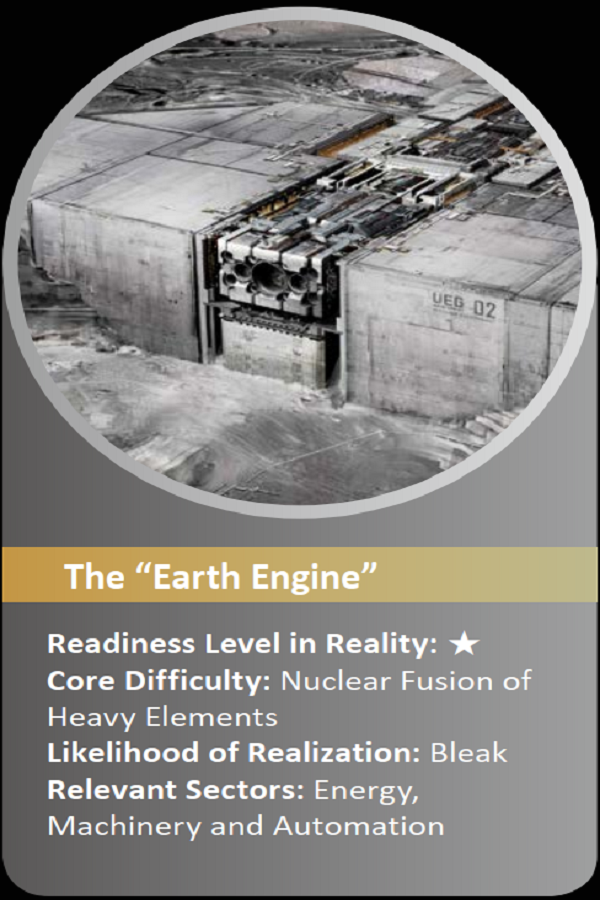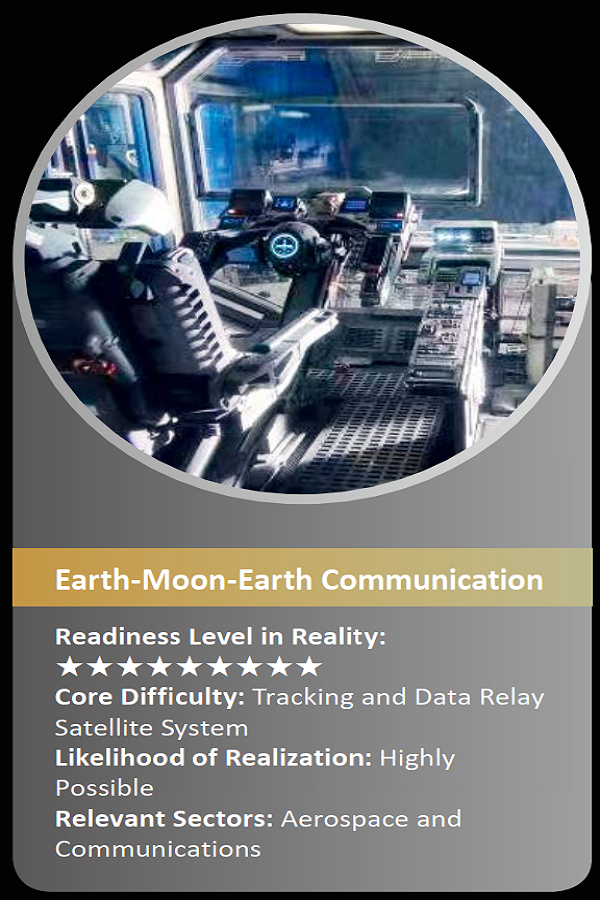Wedding Science and Art

Five years ago, none of us could have imagined our names in movie credits or the encouragement from the many people who recognize our contributions therein. Science and art were long believed to stand at opposite sides of a spectrum like parallels with no intersection. But we shattered that stereotype when the team of scientific advisors affiliated with The Wandering Earth II invited us to join them. The sci-fi blockbuster prequel was released on the Chinese mainland on January 22, 2023, with its box office revenue exceeding 3.8 billion yuan (about US$550 million) nationwide by February 19, ranking among the top 10 in the Chinese mainland’s history.
Imagined Future
We embarked on a two-year journey of “realizing sci-fi dreams” after accepting the invitation. Throughout cinema history, scientific consultants have been frequently involved in Hollywood movie making. But The Wandering Earth II established the first large-scale scientific advisory team for filmmaking on the Chinese mainland. What is the point of scientific advisors for a movie? What is their role in the filmmaking process? What are the boundaries of science in a sci-fi movie? The whole crew managed to blaze a path through the darkness despite various setbacks, and our achievements were eventually recognized by fans with tolerance and love. After the film was completed, a premiere for an audience of scientists was held. When we noticed increasing interest in scientific details from people ranging from scientists to kindergarteners, we were surprised to realize that we might have succeeded in creating an imagined future.
Over the past two-plus years, we were responsible for proposing, presenting, and actualizing core concepts such as artificial intelligence (AI) and digital life in the film. We found that the filmmaking process did provide much larger and unrestrained room for imagination than scientific research, and open, free imagination and reasoning are exactly the most creative and interesting parts of science. The science-based free explorations found more expression in the reasoning of the future world, ranging from concepts such as “digital life” and “moon base” to details like “waterproof spray” and “sixty-hour day.”
When science, the presentation of facts, weds fictional filmmaking, the art of humanism, their child is a real and fascinating future society.

Roles of Scientific Advisors
The success of a movie largely depends on emotional resonance. For a sci-fi movie, the aim is to create a credible and consistent future world as the emotional base to enrich the worldview. Before the preparations, our crew conducted a large-scale survey and decided to present the film in a “future documentary” style to showcase reality in terms of science, drama, and visual arts. After discussions, we reached consensus that pursuit of details was an important indicator of excellent work and that authenticity demanded a worldview rich in details and reflective of current reality. Hence, one of our working principles was to ensure the crew was aware of as many scientific facts and logics as possible when depicting science-oriented fantasy to improve the sense of authenticity of the film.
Scientific review is another core job. After many rounds of communication with the crew, we found that the film itself had its own artistic laws. For commercial purposes, the crew tended to strike a balance between science and art and make some trade-offs. For example, time illusion was created through editing, and visual spectacles emphasized through comparison in the film. We believed that the scientific bottom line is to ensure that within the three-hour run, the audience does not get yanked out of the future world depicted in the film by an out-of-place line, scene, or prop. We were particularly cautious about scientific details that were likely to arouse more attention and repeatedly looked at elements that run through the main plot of the movie.
Also, the crew expected scientific consultants to help rationalize the plot and sci-fi elements since literary and art practitioners have limited access to cutting-edge technologies which could be crucial for imaginative purposes. For example, the “550 series” intelligent quantum computer, the concept of “digital life,” the remote sensing operation of automated multipurpose military robots, and the “Earth Engine” depicted in the movie were inspired by existing quantum computers, metaverses and brain-computer interfaces, somatosensory robots, and the “artificial sun,” respectively. According to the crew, the contribution of scientific consultants to the narrative, presentation, and credibility of events in the film was much greater than anything they did for the preset scientific bottom line.
The early work of scientific consultants involved plots and worldviews while most of their responsibility at later stages revolved around providing advice related to scientific presentation. For the movie, suggestions were offered on details like key props such as the “digital life cards” (onto which human consciousness and memory are uploaded to achieve immortality), code running on scientists’ computers, formulas written in a room, and even the actors’ performances. These enriching details contributed to the movie’s sci-fi sense.
It’s generally agreed that science is noble for revealing laws, and art is gorgeous for expressing feelings. When a splendid story is shared according to the laws of the world, depictions rise from fantastic to real. A sci-fi movie can arouse passion for and reflection on real science.

The authors served as the AI scientific advisors for The Wandering Earth II.